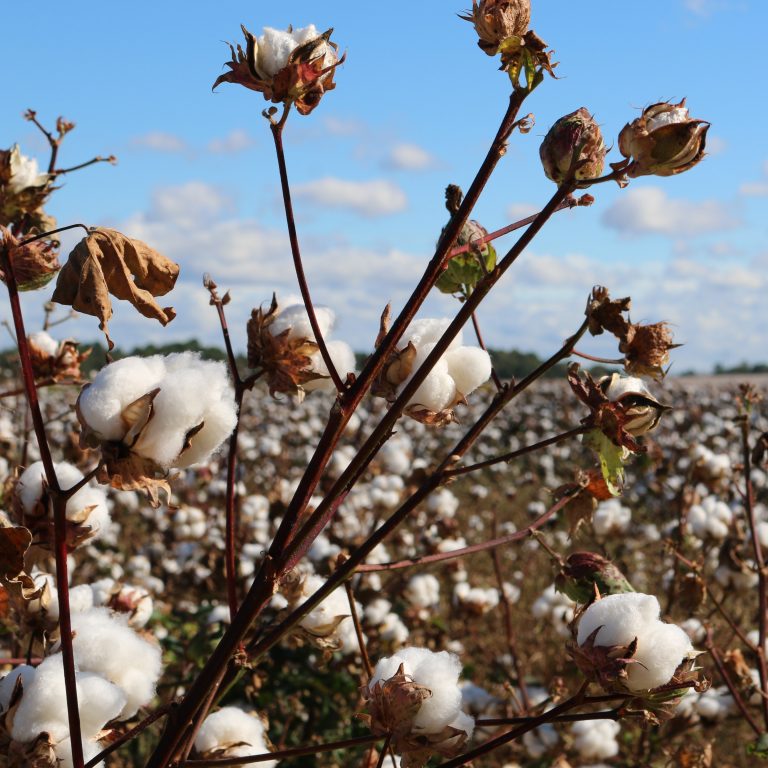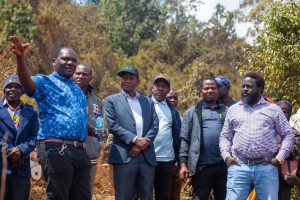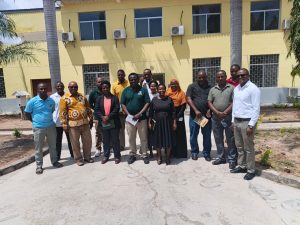Cotton Victoria Project Eyes To Extend Agronomic Knowledge to More Farmers In Next Sowing Season

By Semaweb Senior Reporter
With the new best sowing spacing system the farmers are now managing to harvest over 2.2 tons per acre from the previous 300 kilos they used to yield
THE Tanzania’s flagship cotton initiative, Cotton Victoria Project (CVP) is focusing to expand the cultivation scope and productivity in the production of the economic fibre crop in the coming season.
This, is after the $5,802,019.08 worth initiative to manage assisting a total of 217,061 out of 517,343 in at least eleven cotton growing regions across the country to adopt the new planting space of 60 centimeters from row to row , and 30 centimeters from hole to hole, bringing the number of the cotton plants to 44,444 per acre from the formal 22,222 plants.
With the new best sowing spacing system the farmers are now managing to harvest over 2.2 tons per acre from the previous 300 kilos they used to yield, the impressive development which has payed key role to help heighten the country’s cotton annual production.
Dr. Paul Saidia, the Director of TARI Ukiriguru, told this publication in an interview yesterday that they’re planning to have more farmers adopting the new system in the coming growing season so as to further push the sector’s productivity into new heights.
He added that the initiative which works in sync with the Tanzania Cotton Board (TCB) has also worked impressively to assist the beneficiary to developed useful biopesticides and other natural farming practices which has enabled them to grow the crop organically and thus, collecting improved yields.
“We’re currently working serious efforts to reach out to more farmers in all regions with cotton growing potentials so that they can adopt the recommended sowing spacing to increase production and productivity,” expressed Dr. Saidia who is also the national coordinator for cotton research.
He expressed that if a farmer manages to get at least 10 cotton buds per plant means he/she is assured to harvest a least 1400 kilos of cotton per acre.
“Cotton yield increases as the number of survival buds increases per plant, through the project farmers are being advised to improve on farm management to ensure cotton plants increases the number of buds to 20 and 30 buds per plant in order to increase yield,” he added.
Speaking for his part, the acting director of the Tanzania Cotton Board (TCB), Mr James Shimbe said the project plays a significant role in elevating performance of the farmers in the sector.
He observed that the project was cementing efforts by the board to increase productivity among a total of 500,000 farmers who are estimated to cultivate the crop in the country, covering at least 1,000,000 acres in different regions.
He said the board is implementing a strategy to ensure the country stand on a more professional side on attaining additional value chain for the fibre crop.
According to him, there are at least 92 cotton gineries in Tanzania , whereby out of the number, 58 factories are operating, whereby 35 ginneries are currently active on the market.
“The board is currently working to attract potential investors from within, and outside the country to chip-in and invest into the economic sector,” he informed.
He added, there’s serious intervention to improve the crop’s production and productivity, and thus, such efforts must go in tandem with revival of relevant ginneries.
Moreover, he said that the vision is to ensure the country produces cotton fibres and clothes in finished form, to cater for domestic, as well as for exportation.
“We have started to receive some applications from several investors who wish to invest into ginneries sector, and we’re looking forward to keep on receiving more applications,” he unveiled.

He hailed the Tanzania Agricultural Research Institute (TARI) for running special project for upscaling production of the economic cash crop in the country.
The project, CVP, runs in cooperation with several stakeholders, including the Ministry of Agriculture of Tanzania, the Brazilian Cooperation Agency (ABC), the Brazilian Cotton Institute (IBA), the Federal University of Lavras (UFLA), the Tanzania Agricultural Research Institute (TARI-Ukiriguru) and the Tanzania Cotton Board (TCB).









